It is called model maintenance when an existing series is more or less extensively beefed up. This is currently the case with the Garmin Striker Plus series, which now comes in a lively (vivid) form. In this article, you can find out how this turned out and whether Garmin succeeded in making the already successful Striker family even more attractive.
1. What's new about the Garmin Striker Vivid series?
We know the so-called facelift all too well from the automotive industry. A little design work is done on the front apron and the headlights – and the marketing department has something to talk about. A new model.
The manufacturer will have had something similar in mind for the Garmin Striker Vivid series. One has a bit of a hard time recognizing a new model series with the few changes made compared to the Plus models.
- The Striker Plus hardware, for example, has been left untouched.
- Software-wise, only seven new high-contrast color palettes are available, which should allow for a better display of the sonar images.
That’s about it. Kind of disappointing, especially since there would have been several hardware options to significantly upgrade the Striker devices at points.

The following should be mentioned here:
- The missing strain relief of the cable connections,
- the adapter solutions for the 12-pin encoder connection of the GT52 in the SV models.
- Likewise, the GPS-only solution (without chart plotter) is no longer up to date even in this price range – at least for the large devices in 7 and 9 inches.
Who now pulls the price card and would like to see it differently, should be countered with the fact that a Striker Vivid 7sv with the GT52 transducer is just 100 € cheaper than a 7 inch Raymarine Element with four types of fish sonar techniques – including 3D and a fully equipped chartplotter. The quad transducer is also already included in the price.
Not to be misunderstood at this point: The Garmin Striker series is always worth considering in the lower price range, as it offers excellent capabilities in both the fish finder and transducer areas. And therefore is definitely a recommended fish finder purchase for the price-conscious user. But even a successful echo sounder family can be made even better in detail. Especially so that the term “new” gets a little more substance than currently with the Striker Vivid series.
2. What does the series have to offer?
The Vivid series is – as already mentioned at the beginning – completely based on the Garmin Striker Plus series, which has been around for a while. And was only slightly upgraded by new graphics. There are all device sizes from 4 – 9 inches with (identifier SV) and without SideVü (identifier CV).
-

The Ultimate Fish Finder Guide
Download 40 pages for free now
Reviews ( 17 )
2.1. What do the new color graphics bring?
The seven additive color palettes are intended to improve the display of echo sounder images. According to the manufacturer, different external factors such as
- lighting conditions,
- the ground structures and
- the personal eyesight of the individual user
are now taken into account.
This means in plain language that everyone can select his preferences in the color range, according to his abilities and inclinations. Compared to the Garmin Striker Plus family, the appearance of the display has noteably improved. The fish finder images have become more contrasty, subjectively sharper and can be optimally adapted to the respective situation. In this respect, the manufacturer did well to include this option. By the way, this has also found its way into the revised Garmin GPSMAP devices.


2.2. What makes the "new" Garmin fishfinder series interesting?
We’ll break down the features and functions of the Garmin Striker Plus family once again to draw your attention to the overall package that you get for your money with the Vivid variant.
2.2.1. Traditional echo sounder with Chirp
The Striker Vivid series comes with the traditional chirp sonar, which has been systematically developed over the years in Garmin fishfinders and equipped with especially adapted chirp transducers. This technology provides crystal clear fish finder images with clean object separation and impressive detail resolution. The manufacturer has done a great job here – especially because it has implemented the possibilities of this technology even in the lower price range.
2.2.2. ClearVü and SideVü functions
ClearVü (DownScan) and SideVü (Sidescan) are convincing. There are small differences to the competition here and there in the subtleties, but they are only of minor importance in practice. In the display differentiation, the new Striker Vivid series with its additional color palettes has collected visible plus points in these sonar methods – as you can easily see from the two images shown above.
-

The Ultimate Fish Finder Guide
Download 40 pages for free now
Reviews ( 17 )
- Rated 5 out of 5
Raphaël G
Very effective. - Rated 5 out of 5
Vladimir M
The book describes the fish finder physics and builds up your understanding of how it actually works. I have yet to apply this knowledge with my Humminbird, but having that much of theory is extremely helpful in understanding and processing the sonar output. - Rated 5 out of 5
NICHOLAS JOHN REECY
The Deeper Guide was just what I was looking for. YouTube is full of reviews of the sonar but little in the way of education. I highly recommend for those wanting to better understand their Deeper sonar. - Rated 5 out of 5
Henrik
I am a beginner when it comes to fishing with fish finders. For me, the book has been very informative to judge the displays on the fish finder “realistically” and to recognize what limits there are when searching for fish with the fish finder. Now I know when I have to use my regular sonar and when I have to use my ClearVü or which settings I should apply to the device at which spot. I was impressed by the many illustrations, especially for understanding the functions. - Rated 5 out of 5
Dr. Manfred Marx
Very well written, so that it is understandable even for amateurs and structured concisely. - Rated 5 out of 5
Andreas Witz
An excellent book for learning about fish finders. - Rated 5 out of 5
AK
The ultimate fish finder guide is a beneficial introduction. I am excited to put into practice what I have learned. - Rated 5 out of 5
Lübbe Wolfgang
A well-written problem solver. - Rated 5 out of 5
Kalksee
The book is unmatched for understanding how a sonar/fish finder works. I was a fish arch hunter, and I suspect my fishing tactics will change. The book has clear writing, and you understand you understand a lot the first time you read it. I can only recommend it to anyone interested in technology. Thank you for this fantastic book! Thoralf - Rated 5 out of 5
Enrico Indelicato
I had absolutely no idea about fish finders. Since I read the book, I had a real Aha experience! For me, as a beginner, very detailed and uncomplicated explained. I can only recommend it! Best regards Enrico - Rated 5 out of 5
Udo
Reading this book has suddenly made my fish finders much more valuable to me! I realized that I made typical mistakes in interpreting the images, which I will now avoid. The authors use clear, understandable language and also explain the mathematical-physical basics very well. The fact that there is no advertising for one or another fish finder manufacturer has increased its credibility. At the same time, you get a solid impression of what is feasible today on this subject – and the “advertisements” of the manufacturers also helped. The book is ABSOLUTELY to recommend, because what good is an expensive fish finder if you too often draw the wrong conclusions from the obtained illustrations? In this respect, the money for the book is very well invested. - Rated 5 out of 5
Josef Weiss
I had to wait a long time for such great explanations. Thank you. - Rated 5 out of 5
Peter
It is a well-described, scientifically sound book highly recommended to anyone who wants to advance and doesn’t already know everything. - Rated 5 out of 5
Holger Just
Ich angle seit Jahren mit Echolot. Aber erstens bleibt man da irgendwann auf einer bestimmten Verständnisstufe stehen, diese konnte ich durch dieses Buch um einiges anheben. Als zweiten Aspekt mußte ich nach dem Lesen dieses Buches erkennen, dass ich durch “gefährliches Halbwissen” jahrelang Fehlinterpretationen hatte bzw. die Möglichkeiten meines Lotes nie richtig ausgenutzt habe. Also mein Fazit : Sehr empfehlenswert, die komplexen Zusammenhänge sind verständlich beschrieben. Das Buch ist ideal geeignet um sich in der angelfreien Zeit wertvolles Wissen für die folgende Saison anzueignen und beim Thema Echolot wieder uptodate zu sein. - Rated 5 out of 5
Matthias Wappler
Sehr gut!! - Rated 5 out of 5
M. Hermanns
Wer dieses Buch nicht liest, ist selber Schuld! Kein Vortrag, kein Presseartikel oder Bericht, Nein sogar keine Online-Schulung oder gar ein 365 Tage Support, vermittelt so viele essentielle Kenntnisse, wie dieses Buch. Nach zwei drei bebilderten Erklärungen wird dir klar, das ohne dieses Wissen, die Gewinn bringende Nutzung eines Echolotes gar nicht möglich ist. Beziehungsweise dir wird klar das du dein Echolot bisher sehr ineffizient genutzt hast und das dir eine Menge verborgen geblieben ist. Ich habe nach dem ersten gleich drei weitere Exemplare gekauft und drei guten Angelfreunden eine Anerkennung für unsere Freundschaft mit diesem Buch gemacht. Alle drei verfügen über 30 Jahre Bootsangelerfahrung und alle drei waren ebenfalls begeistert, jeder konnte sein Wissen deutlich erweitern. Deshalb freue ich mich auch so sehr auf das Zanderbuch welches hoffentlich noch vor dem Wochenende bei mir ist. Liebe Grüße weiter so. dermarc - Rated 5 out of 5
TACKLEFEVER
Das Buch beginnt mit rund 15 Seiten Technik Erläuterung bei der versierte Echolot Nutzer, zu denen ich mich zähle, vielleicht geneigt sind weiter zu blättern weil sie vieles schon wissen und Anfänger weiter blättern möchten weil es zu trocken scheint. Aber etwas Basiswissen gehört einfach dazu. Selbst wenn man als Anfänger bei der Basis Theorie weiter blättern will, sobald es um Chirp geht sollte “jeder” genauer hinschauen 😉 es lohnt sich. Und auch für mich fand ich noch ein zwei kleine Dinge die ich nicht wusste oder noch nicht im Zusammenhang mit anderem sah. Die weiteren Abschnitte (bis Kap. 3) befassen sich mit den verschiedenen Techniken der Geber, Bildschirme, oder dem Smartphone, dem Tablet als Anzeigemedium. Was mir bis dahin sehr positiv auffiel waren die “MERKE-Boxen”, kleine übersichtliche Passagen welche Kerninformationen des zuvor vermittelten Wissen zusammenfassend hervorheben. Auch wenn man nicht alles komplett verstanden hat, hilft diese leicht verständliche Zusammenfassung des voraus gegangenen Inhalts sehr. Kapitel 4 geht auf 2D, Down-Imaging, Side-Scan-Sonar ein, dabei ohne zu konkret auf einen Hersteller abzustellen was ich ebenfalls sehr positiv fand. Dem Angler wird der praktische Einsatz und das Verstehen dessen was man auf dem Echolot sieht erläutert. Fragen wie z.B.: Wo befindet sich der Fisch genau? Was ist eine Fischsichel? Wie setze ich das Echolot beim Vertikalangeln ein? Warum gibt es Vertiefungen obwohl man keine sieht und umgekehrt? Wie erkenne ich die Bodenbeschaffenheit? Fragen zur richtigen Deutung der Unterwasserstruktur, dem optimalen Bildlauf- und Boots- Geschwindigkeit, der Sprungschicht, usw. werden auch beantwortet. Würde ich alles aufzählen würde es hier zu weit führen. Es folgen noch kurze Infos zur Multibeam Technik und ein Kapitel “Die 3D Show mit Garmins Panoptix”. Hier wurde für mich zu wenig Wissen vermittelt, nur auf einen Herstellers gezeigt und nicht auf ähnliche Funktionen oder Techniken anderer Hersteller Bezug genommen. Ich hoffe es kommt in der nächsten Auflage mehr zu dem Thema. Am Ende des Buches kommen Infos rund um konkrete Einstellungen am Echolot. Hier wird einer der wichtigsten Punkte überhaupt behandelt und dies praxisnah und hilfreich. Aller spätestens jetzt lohnt sich das Buch für alle Neueinsteiger. Viel einfacher und kompakter geht es kaum. Ein paar wichtige zuvor besprochene Punkte zu Einstellungen bei bestimmten Echolot Funktionen werden erläutert und mit Checklisten im Kapitel “Die effektivsten Einstellungen beim Echolot auf einen Blick” zusammen gefasst. Hier lohnt es sich für Anfänger die Seiten besonders aufmerksam zu lesen und vielleicht als Kopie mit auf Boot zu nehmen. Damit fällt der Kampf mit den gefühlten tausenden von Einstellungen am Echolot auf dem Wasser leichter. Es klingt fast zu schön um wahr zu sein, aber tatsächlich scheint mir das Buch für Anfänger und Fortgeschrittene Anwender gleichermaßen gut geeignet zu sein. Manchmal suchte ich mehr Hintergrundwissen, weil der im Prinzip sehr gute Ansatz es für Anfänger leicht verständlich zu halten manche Herstellerabhängige Feinheiten außer Acht lässt. Das Buch hat eine gute Gliederung, fasst vieles kompakt zusammen und geht bei wichtigen Punkten auch meist für Fortgeschrittene etwas in die Tiefe. So richtet sich das Buch meiner Meinung nach nicht an wissenschaftliche Anwender, sondern an Echolot Neulinge indem es auch viele Basis Fragen beantwortet ebenso auch an Fortgeschrittene indem es auf diverse Punkte tiefer eingeht. Wenn ich den Sinn des Buches in einem Satz beschreiben sollte, dann wäre dies: Echolottechnik für Anfänger interessant und verständlich erklären und dabei auch ein wenig tieferes Wissen für alle zu vermitteln. Mir ist Stand Juni 2017 kein anderes Buch bekannt das diesen Ansatz so konsequent verfolgt. Ich hoffe ihr habt so viel Spaß beim lesen wie ich. Luke www.tacklefever.de
2.2.3. GPS and custom charting
The Striker family uses GPS, as well as its own map creation with Quickdraw Contours. The software is already installed, and it is self-explanatory to use. Turn on the app via the menu and the device creates high-resolution fishing maps with depth contours at 30 cm intervals. The maps are stored directly in the device memory. Map exchange and sharing is possible via wifi and the ActiveCaptain app on the smartphone. All communications of the device can be carried out via this app.

With the GPS you can
- navigate in a limited way,
- mark hotspots and return to them later.
Of course, these functions cannot replace a chartplotter. However, they are a useful option that works well in practice. This is also confirmed by many satisfied users.
2.2.4. The Garmin CHIRP transducer range
A highlight of the echosounder manufacturer’s efforts to provide us with the best images under and around the boat is its CHIRP transducer family. Where there is Chirp written on it, there is also Chirp in it. Of course, the prerequisite is always that you order the right transducer for your personal Striker Vivid.

For the Striker Vivid series these are
- the GT52HW-TM transducer for all SV units and
- the GT22HW-TM for the CV types.
Garmin also sells the GT20 dual frequency transducer in some combinations. This one is not bad either. Unfortunately, as a dual frequency type, it can only follow the chirp of the device to a very small extent. Thus the possibilities of the hardware to produce first-class chirp images are not fully utilized with it.
All CV units with 4 and 5 inches are also available without transducer, so you can order the chirp specialist GT22HW-TM for the small models throughout. Why of all models the 7 inch model (7cv) is force married with the GT20 is not understandable. Especially with this model, the GT22HW-TM would have been the better alternative. It helps to negotiate with your supplier about an exchange if necessary.
The SV models (which are only available in the 7- and 9-inch format) are delivered with the triple encoder GT52HW-TM – an excellent deal. Optionally, it is also possible to buy them without a transducer.
2.2.5. All Garmin Striker Vivid models at a glance
| Equipment details and range of functions |
Striker Vivid 4cv |
Striker Vivid 5cv |
Striker Vivid 7cv |
Striker Vivid 7sv |
Striker Vivid 9cv |
Striker Vivid 9sv |
|---|---|---|---|---|---|---|
| Screen resolution |
272/480 |
800/480 |
800/480 |
800/480 |
800/480 |
800/480 |
| Screen size in inches |
4,3 |
5 |
7 |
7 |
9 |
9 |
| GPS |
X |
X |
X |
X |
X |
X |
| SD card slot |
- |
- |
- |
- |
- |
- |
| Chartplotter |
- |
- |
- |
- |
- |
- |
| 2D-Chirp High/Middle |
X |
X |
X |
X |
X |
X |
| ClearVÜ |
X |
X |
X |
X |
X |
X |
| SideVÜ |
- |
- |
- |
X |
- |
X |
| QuickDraw Contours |
X |
X |
X |
X |
X |
X |
| Wlan |
X |
X |
X |
X |
X |
X |
| Active Captain app compatible |
X |
X |
X |
X |
X |
X |
| 2-frequency transducer GT20 |
X |
X |
X |
X |
X |
X |
| CV chirp transducer GT22HW-TM |
X |
X |
X |
X |
X |
X |
| SV chirp transducer GT52HW-TM |
- |
- |
- |
X |
- |
X |
| Transmitting power RMS |
300 W |
500 W |
500 W |
500 W |
500 W |
500 W |
| Network capability |
- |
- |
- |
- |
- |
- |
| Keyboard operation |
X |
X |
X |
X |
X |
X |
| Touchscreen |
- |
- |
- |
- |
- |
- |
| Surface- / flush-mounting |
X/- |
X/X |
X/X |
X/X |
X/X |
X/X |
All models (except Striker Vivid 7cv) are also available without transducer. If you want the best chirp images, you should
- buy the chirp transducer GT22HW-TM (approx. 198 €) for all CV models (2D chirp plus ClearVü).
- For the SV models (with additional SideVü) combinations with the very good GT52HW-TM are offered.
Please note that for the connection of a CHIRP transducer an adapter is necessary for all models. For the CV models this is a 4-pin (instrument) to 8-pin (transducer) adapter. For the SV models a Y-cable with 2 x 4-pin (device) to 1 x 16-pin (transducer).
3. Conclusion: Garmin Striker Vivid echo sounders
The Garmin Striker Vivid model series is in the lower price range located within the very first row of desirable candidates. The unchanged fish finder technology of the Striker Plus series, which has already received much praise in the past, shows its very best side with the additional new graphics.
All fish finder images have gained in contrast, sharpness and detail resolution. The really worth seeing display options can be optimally adjusted by a variety of integrated options, following individual requirements and wishes.
Unfortunately, the manufacturer hasn’t managed to eliminate the aforementioned criticisms of the cable connections with the “new” model series. As for the missing chartplotter, we would have liked to see the technology integrated at least in the 7 and 9 inch devices. This would have been the final touch for these two large models.
For all Striker Plus owners, a switch to the Vivid series is naturally not worthwhile. The differences are too small. For a new acquisition, however, the new color palettes have created an additional argument to get into fishing with fish finders at a reasonable price.

-

The Ultimate Fish Finder Guide
Download 40 pages for free now
Reviews ( 17 )
- Rated 5 out of 5
Raphaël G
Very effective. - Rated 5 out of 5
Vladimir M
The book describes the fish finder physics and builds up your understanding of how it actually works. I have yet to apply this knowledge with my Humminbird, but having that much of theory is extremely helpful in understanding and processing the sonar output. - Rated 5 out of 5
NICHOLAS JOHN REECY
The Deeper Guide was just what I was looking for. YouTube is full of reviews of the sonar but little in the way of education. I highly recommend for those wanting to better understand their Deeper sonar. - Rated 5 out of 5
Henrik
I am a beginner when it comes to fishing with fish finders. For me, the book has been very informative to judge the displays on the fish finder “realistically” and to recognize what limits there are when searching for fish with the fish finder. Now I know when I have to use my regular sonar and when I have to use my ClearVü or which settings I should apply to the device at which spot. I was impressed by the many illustrations, especially for understanding the functions. - Rated 5 out of 5
Dr. Manfred Marx
Very well written, so that it is understandable even for amateurs and structured concisely. - Rated 5 out of 5
Andreas Witz
An excellent book for learning about fish finders. - Rated 5 out of 5
AK
The ultimate fish finder guide is a beneficial introduction. I am excited to put into practice what I have learned. - Rated 5 out of 5
Lübbe Wolfgang
A well-written problem solver. - Rated 5 out of 5
Kalksee
The book is unmatched for understanding how a sonar/fish finder works. I was a fish arch hunter, and I suspect my fishing tactics will change. The book has clear writing, and you understand you understand a lot the first time you read it. I can only recommend it to anyone interested in technology. Thank you for this fantastic book! Thoralf - Rated 5 out of 5
Enrico Indelicato
I had absolutely no idea about fish finders. Since I read the book, I had a real Aha experience! For me, as a beginner, very detailed and uncomplicated explained. I can only recommend it! Best regards Enrico - Rated 5 out of 5
Udo
Reading this book has suddenly made my fish finders much more valuable to me! I realized that I made typical mistakes in interpreting the images, which I will now avoid. The authors use clear, understandable language and also explain the mathematical-physical basics very well. The fact that there is no advertising for one or another fish finder manufacturer has increased its credibility. At the same time, you get a solid impression of what is feasible today on this subject – and the “advertisements” of the manufacturers also helped. The book is ABSOLUTELY to recommend, because what good is an expensive fish finder if you too often draw the wrong conclusions from the obtained illustrations? In this respect, the money for the book is very well invested. - Rated 5 out of 5
Josef Weiss
I had to wait a long time for such great explanations. Thank you. - Rated 5 out of 5
Peter
It is a well-described, scientifically sound book highly recommended to anyone who wants to advance and doesn’t already know everything. - Rated 5 out of 5
Holger Just
Ich angle seit Jahren mit Echolot. Aber erstens bleibt man da irgendwann auf einer bestimmten Verständnisstufe stehen, diese konnte ich durch dieses Buch um einiges anheben. Als zweiten Aspekt mußte ich nach dem Lesen dieses Buches erkennen, dass ich durch “gefährliches Halbwissen” jahrelang Fehlinterpretationen hatte bzw. die Möglichkeiten meines Lotes nie richtig ausgenutzt habe. Also mein Fazit : Sehr empfehlenswert, die komplexen Zusammenhänge sind verständlich beschrieben. Das Buch ist ideal geeignet um sich in der angelfreien Zeit wertvolles Wissen für die folgende Saison anzueignen und beim Thema Echolot wieder uptodate zu sein. - Rated 5 out of 5
Matthias Wappler
Sehr gut!! - Rated 5 out of 5
M. Hermanns
Wer dieses Buch nicht liest, ist selber Schuld! Kein Vortrag, kein Presseartikel oder Bericht, Nein sogar keine Online-Schulung oder gar ein 365 Tage Support, vermittelt so viele essentielle Kenntnisse, wie dieses Buch. Nach zwei drei bebilderten Erklärungen wird dir klar, das ohne dieses Wissen, die Gewinn bringende Nutzung eines Echolotes gar nicht möglich ist. Beziehungsweise dir wird klar das du dein Echolot bisher sehr ineffizient genutzt hast und das dir eine Menge verborgen geblieben ist. Ich habe nach dem ersten gleich drei weitere Exemplare gekauft und drei guten Angelfreunden eine Anerkennung für unsere Freundschaft mit diesem Buch gemacht. Alle drei verfügen über 30 Jahre Bootsangelerfahrung und alle drei waren ebenfalls begeistert, jeder konnte sein Wissen deutlich erweitern. Deshalb freue ich mich auch so sehr auf das Zanderbuch welches hoffentlich noch vor dem Wochenende bei mir ist. Liebe Grüße weiter so. dermarc - Rated 5 out of 5
TACKLEFEVER
Das Buch beginnt mit rund 15 Seiten Technik Erläuterung bei der versierte Echolot Nutzer, zu denen ich mich zähle, vielleicht geneigt sind weiter zu blättern weil sie vieles schon wissen und Anfänger weiter blättern möchten weil es zu trocken scheint. Aber etwas Basiswissen gehört einfach dazu. Selbst wenn man als Anfänger bei der Basis Theorie weiter blättern will, sobald es um Chirp geht sollte “jeder” genauer hinschauen 😉 es lohnt sich. Und auch für mich fand ich noch ein zwei kleine Dinge die ich nicht wusste oder noch nicht im Zusammenhang mit anderem sah. Die weiteren Abschnitte (bis Kap. 3) befassen sich mit den verschiedenen Techniken der Geber, Bildschirme, oder dem Smartphone, dem Tablet als Anzeigemedium. Was mir bis dahin sehr positiv auffiel waren die “MERKE-Boxen”, kleine übersichtliche Passagen welche Kerninformationen des zuvor vermittelten Wissen zusammenfassend hervorheben. Auch wenn man nicht alles komplett verstanden hat, hilft diese leicht verständliche Zusammenfassung des voraus gegangenen Inhalts sehr. Kapitel 4 geht auf 2D, Down-Imaging, Side-Scan-Sonar ein, dabei ohne zu konkret auf einen Hersteller abzustellen was ich ebenfalls sehr positiv fand. Dem Angler wird der praktische Einsatz und das Verstehen dessen was man auf dem Echolot sieht erläutert. Fragen wie z.B.: Wo befindet sich der Fisch genau? Was ist eine Fischsichel? Wie setze ich das Echolot beim Vertikalangeln ein? Warum gibt es Vertiefungen obwohl man keine sieht und umgekehrt? Wie erkenne ich die Bodenbeschaffenheit? Fragen zur richtigen Deutung der Unterwasserstruktur, dem optimalen Bildlauf- und Boots- Geschwindigkeit, der Sprungschicht, usw. werden auch beantwortet. Würde ich alles aufzählen würde es hier zu weit führen. Es folgen noch kurze Infos zur Multibeam Technik und ein Kapitel “Die 3D Show mit Garmins Panoptix”. Hier wurde für mich zu wenig Wissen vermittelt, nur auf einen Herstellers gezeigt und nicht auf ähnliche Funktionen oder Techniken anderer Hersteller Bezug genommen. Ich hoffe es kommt in der nächsten Auflage mehr zu dem Thema. Am Ende des Buches kommen Infos rund um konkrete Einstellungen am Echolot. Hier wird einer der wichtigsten Punkte überhaupt behandelt und dies praxisnah und hilfreich. Aller spätestens jetzt lohnt sich das Buch für alle Neueinsteiger. Viel einfacher und kompakter geht es kaum. Ein paar wichtige zuvor besprochene Punkte zu Einstellungen bei bestimmten Echolot Funktionen werden erläutert und mit Checklisten im Kapitel “Die effektivsten Einstellungen beim Echolot auf einen Blick” zusammen gefasst. Hier lohnt es sich für Anfänger die Seiten besonders aufmerksam zu lesen und vielleicht als Kopie mit auf Boot zu nehmen. Damit fällt der Kampf mit den gefühlten tausenden von Einstellungen am Echolot auf dem Wasser leichter. Es klingt fast zu schön um wahr zu sein, aber tatsächlich scheint mir das Buch für Anfänger und Fortgeschrittene Anwender gleichermaßen gut geeignet zu sein. Manchmal suchte ich mehr Hintergrundwissen, weil der im Prinzip sehr gute Ansatz es für Anfänger leicht verständlich zu halten manche Herstellerabhängige Feinheiten außer Acht lässt. Das Buch hat eine gute Gliederung, fasst vieles kompakt zusammen und geht bei wichtigen Punkten auch meist für Fortgeschrittene etwas in die Tiefe. So richtet sich das Buch meiner Meinung nach nicht an wissenschaftliche Anwender, sondern an Echolot Neulinge indem es auch viele Basis Fragen beantwortet ebenso auch an Fortgeschrittene indem es auf diverse Punkte tiefer eingeht. Wenn ich den Sinn des Buches in einem Satz beschreiben sollte, dann wäre dies: Echolottechnik für Anfänger interessant und verständlich erklären und dabei auch ein wenig tieferes Wissen für alle zu vermitteln. Mir ist Stand Juni 2017 kein anderes Buch bekannt das diesen Ansatz so konsequent verfolgt. Ich hoffe ihr habt so viel Spaß beim lesen wie ich. Luke www.tacklefever.de
This brings us to the end of our review of the “new” Garmin Striker Vivid fish finders. If you have any questions, additions or comments, then hit the keys: We look forward to your feedback – Jens and Martin! Or, if you want to read more fish finder reviews, have a look at our detailed fish finder test (including the most popular fish finder models of all major manufacturers like Garmin, Raymarine or Lowrance).
Could you take 1 Click to share your experiences?
We will be forever grateful. With your rating we can improve.
average rating 4.5 / 5. Number of ratings: 13
Be the first to rate this post!


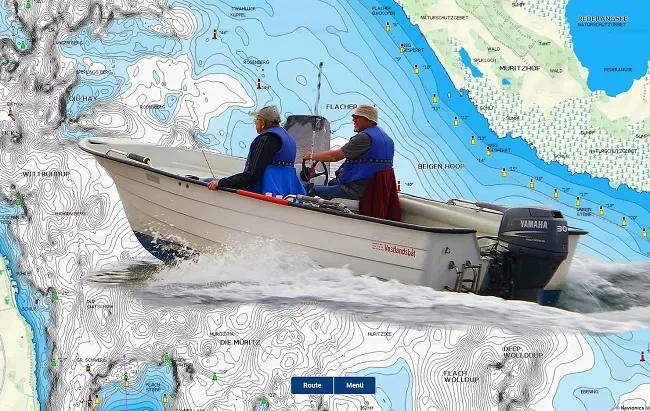


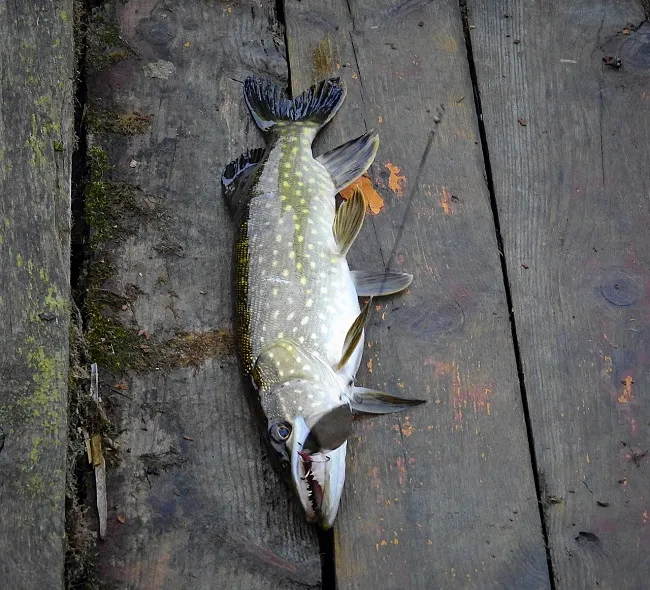




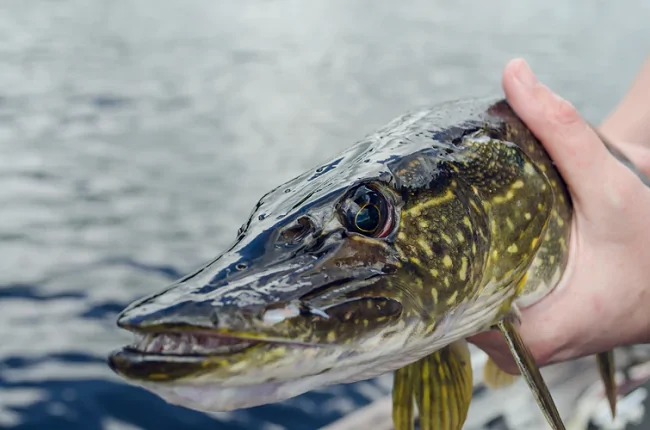

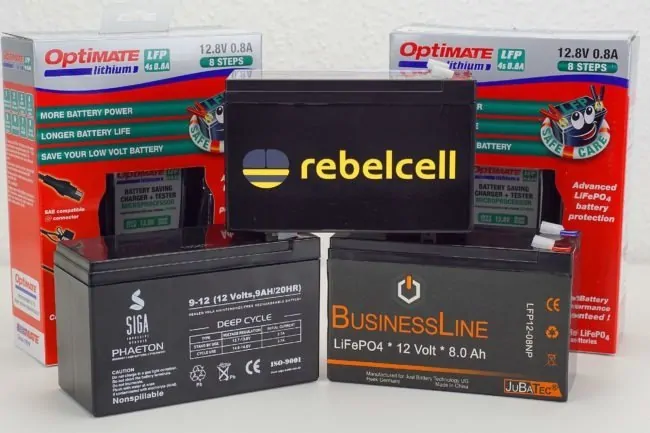

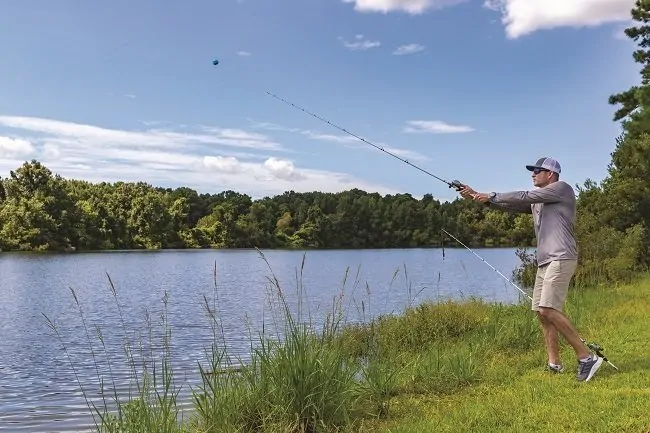
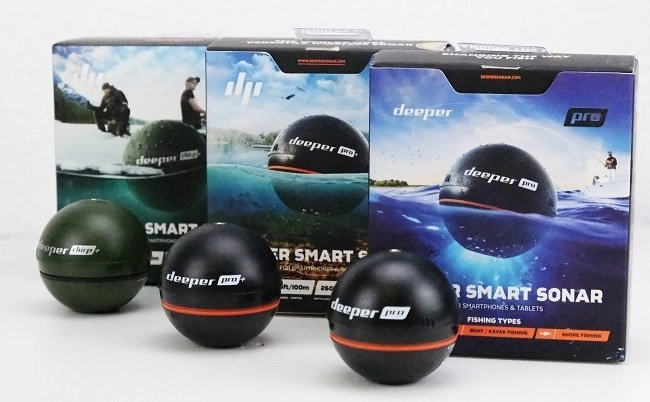



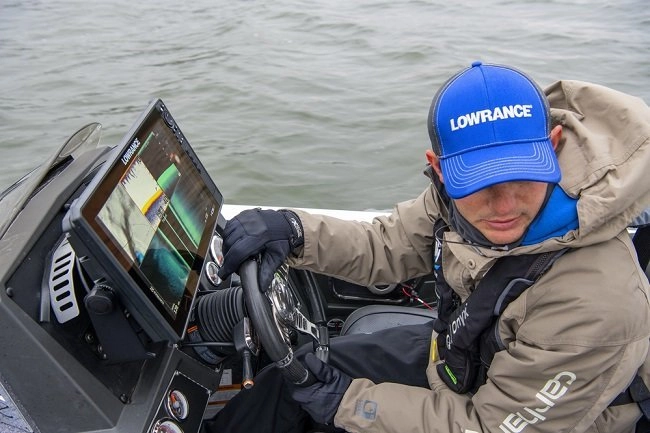
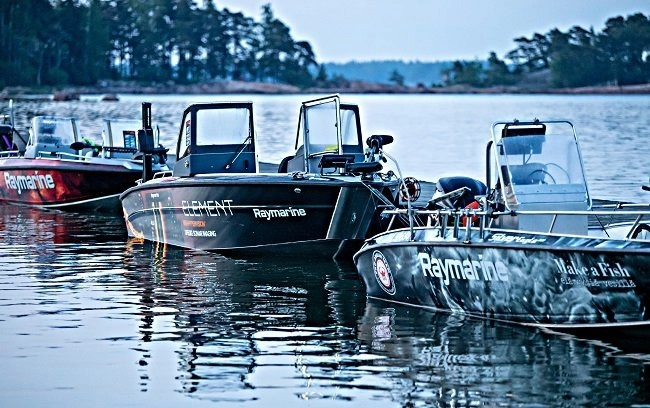
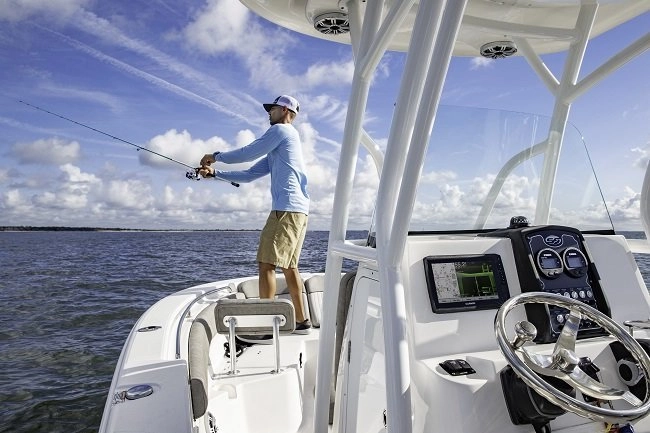
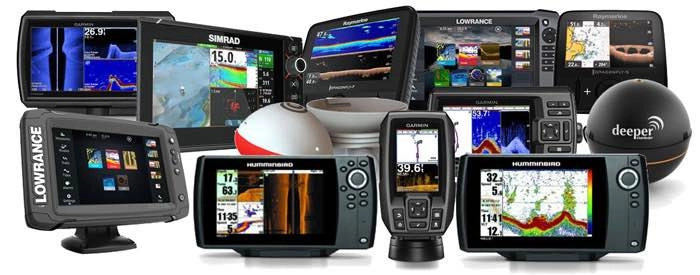
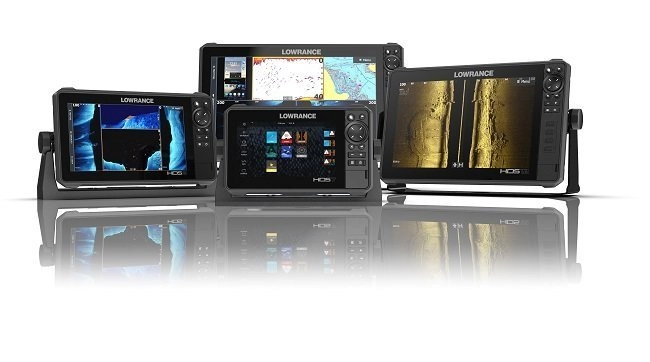



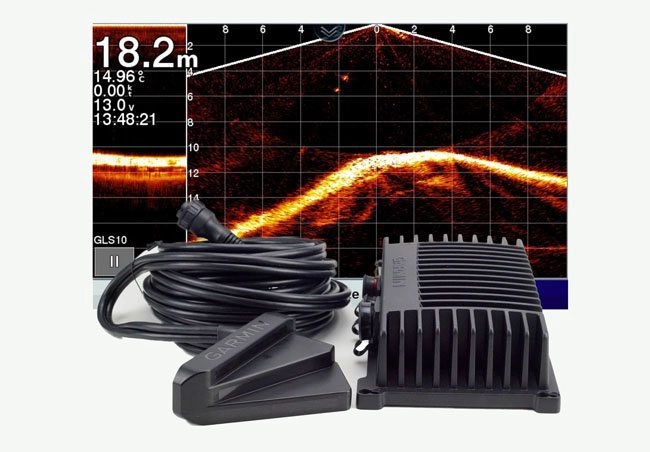
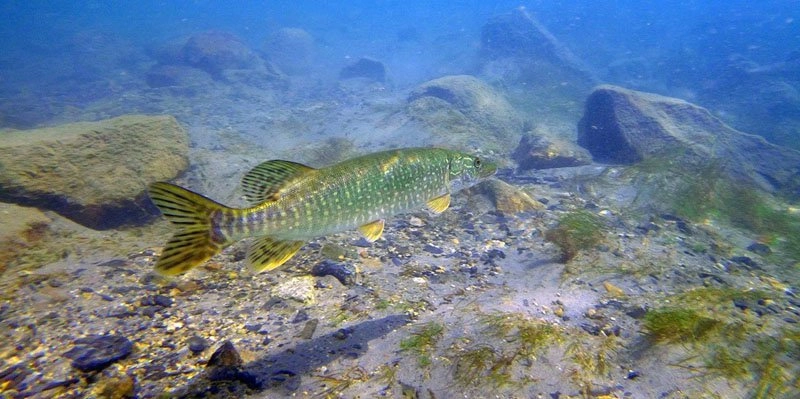
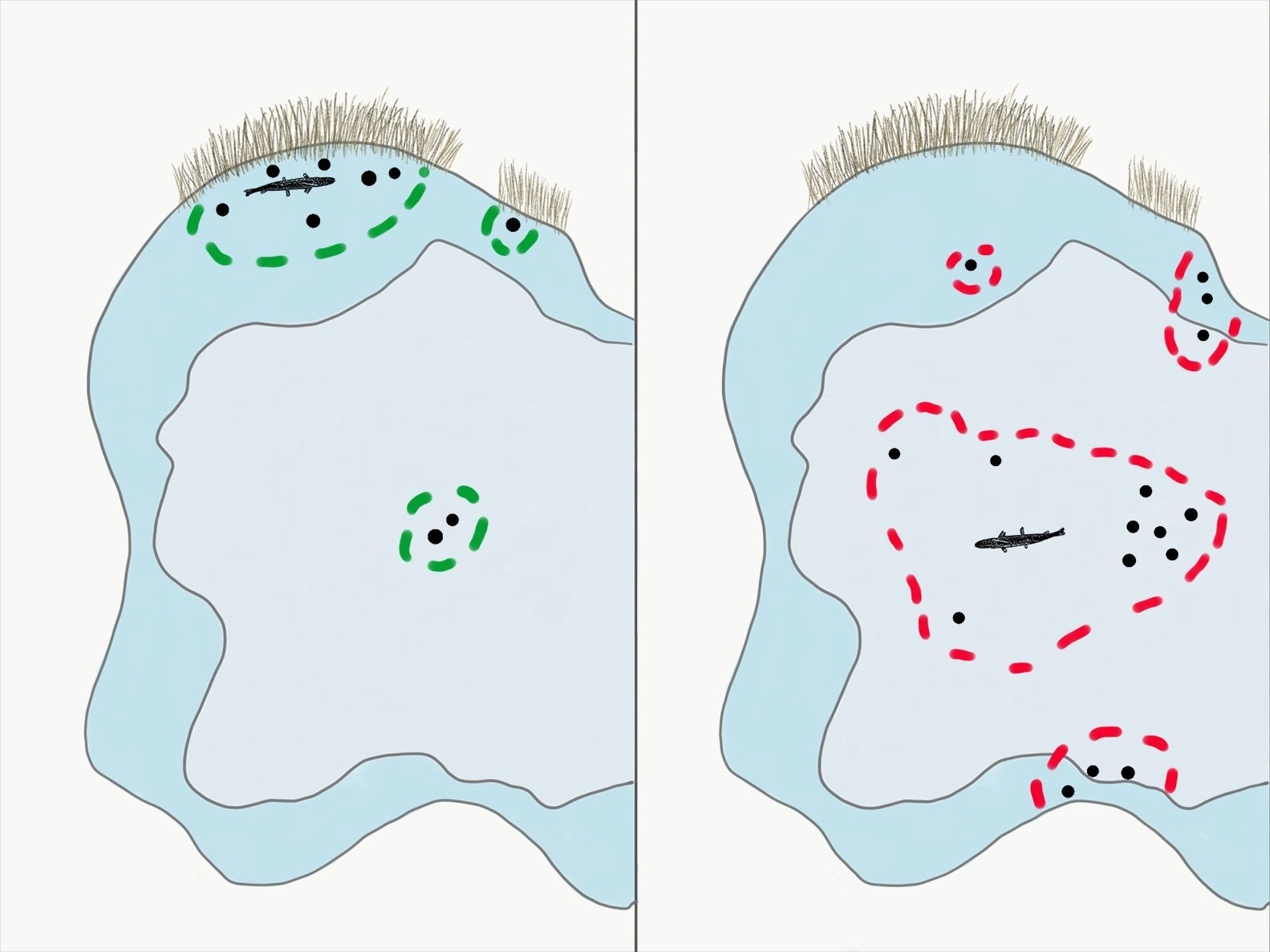
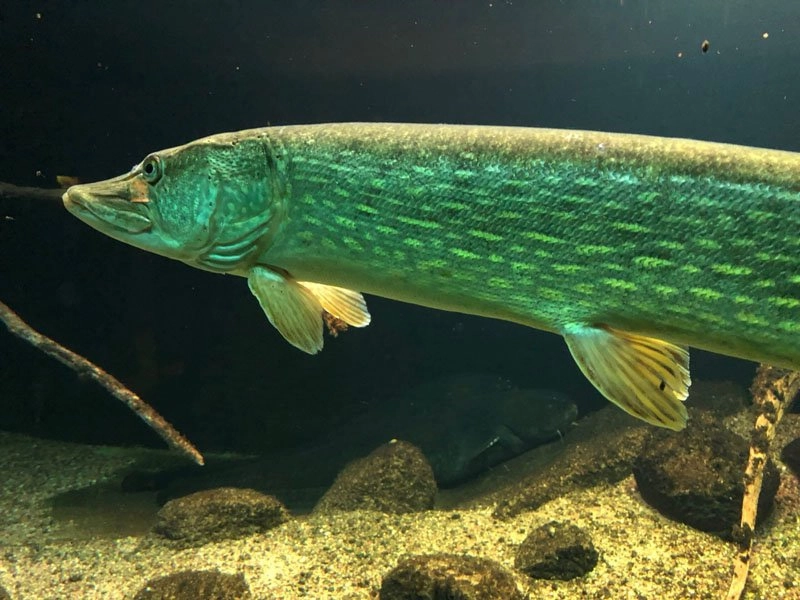

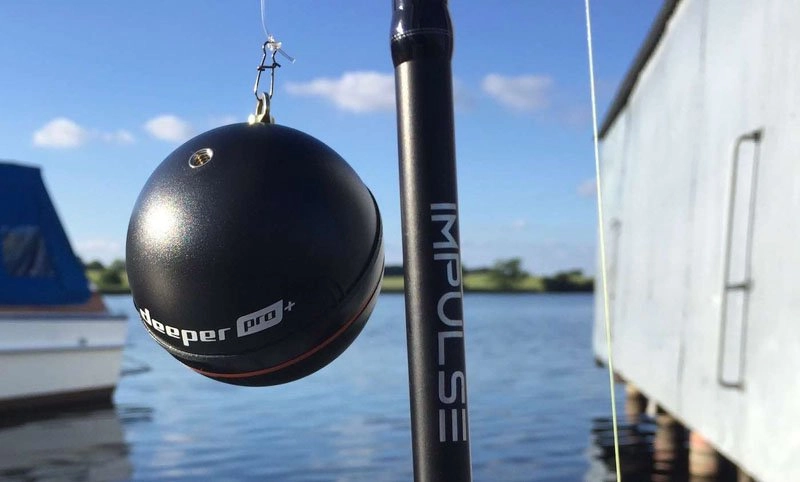




Raphaël G
Vladimir M
NICHOLAS JOHN REECY
Henrik
Dr. Manfred Marx
Andreas Witz
AK
Lübbe Wolfgang
Kalksee
Enrico Indelicato
Udo
Josef Weiss
Peter
Holger Just
Matthias Wappler
M. Hermanns
TACKLEFEVER